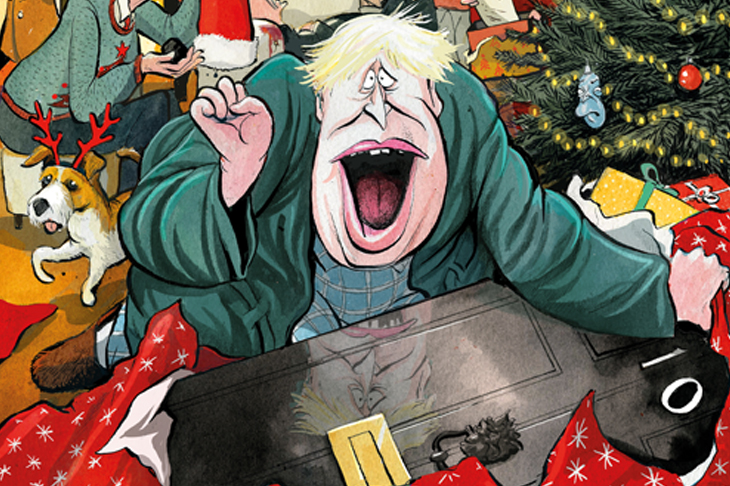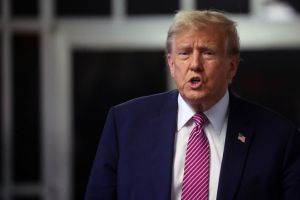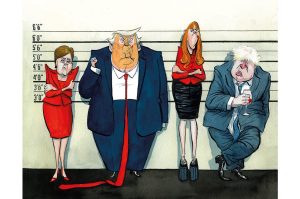The era of uncertainty has ended. Boris Johnson’s decisive victory has not only broken the Brexit deadlock created by Theresa May’s disastrous 2017 campaign, but also turned the page on almost a decade of weak government.
The previous three general elections have all resulted in constrained prime ministers. First, David Cameron was forced to govern in coalition with the Liberal Democrats. Then, in 2015, his slim majority left him dependent on Tories who would be on the other side from him in the EU referendum he had had to promise. The May debacle left her at the mercy of — and defeated by — her own warring factions. But now we’re looking at something very different: a prime minister who is king of all he surveys at Westminster.
In the run-up to polling day, the Tories talked anxiously about what kind of majority they would need to govern effectively. The Chief Whip wanted at least 15, warning that on any issue there could be half a dozen MPs who would cut up rough. Others argued that they’d take a majority of any sort. But a majority of 80, and one made up of so many new MPs who owe their place in the House of Commons to their leader, changes the game. He can, within reason, do what he wants and be confident that parliament will back him. It will be a long time before 42 Tory MPs are prepared to rebel against a prime minister who has transformed his party’s fortunes so comprehensively (and who expelled the last lot of Tories to defy him).
This was a historic election because of what flows from the result. First, the United Kingdom’s 46-year membership of the European project will end on January 31. Since the EU’s march to ever-closer union will continue, it is hard to imagine this country ever voting to go back in, given the likely terms of re-entry. Already, the ‘stop Brexit’ protesters are packing up from outside the House of Commons: that particular shouting match is finally over.
Next, the Conservatives are now a national party, in a way that hasn’t been the case for decades. They lead among every social class and are represented in every area of the country. The political map of the UK is mostly blue — with a few concentrated smatterings of red and a yellow top.
The SNP and Lib Dems both accuse the Tories of being vehicles for English nationalism. But in terms of both seats and vote share, they are the second party of both Scotland and Wales. They are a strong force in the devolved parliaments too, and may yet deny the nationalists a majority in the 2021 Holyrood elections. (This is the simplest way of dealing with the SNP’s demands for a referendum on Scottish independence — see Katy Balls’s article.) Even in numbers of Remain-voting seats, the Tories are second. At the next general election, the Tories will be the incumbents or the principal challengers in 581 of Great Britain’s 632 seats.
Johnson’s critics love to claim that he can either lead a pro-Brexit party or a national party, but not both. They relish saying that ‘Workington man’ has little appetite for turning this country into Singapore-on-Thames. But this analysis misses the point. Johnson and his team have a very different vision of Brexit. Johnson argued in his interview with The Spectator during the campaign that the vote to Leave was driven by regional inequality. This diagnosis means that his prescription is for a Brexit that results in an economic model that works better for the whole country.
This will be the priority, and it will confuse those who think of this government as some kind of triumph of laissez-faire economics. Johnson is, in his own description, a ‘Brexity Hezza’. He is thinking about how government can raise up those parts of the country that have been neglected. He is interested in regional and industrial strategy, projects which have a bad name in center-right circles. Sajid Javid, the chancellor, once said that the words ‘industrial’ and ‘strategy’ ought never to be mentioned in the same sentence: like many Tories, he fears that such an approach more often ends up being about propping up losers rather than picking winners.
Those around Johnson can see another way of awakening the entrepreneurial state. They know that it can be done right. Canary Wharf could not have worked without the state building the Docklands Light Railway and turning the area into an enterprise zone. Further afield, both Silicon Valley and the Israeli economy demonstrate how state support for research can help private sector technology companies thrive.
The Johnson plan is now taking shape, with three components. The first is better infrastructure. Johnson has already indicated that he intends to rip up Treasury rules about funding capital projects to ensure that more building takes place outside of London and the south-east. I understand that Javid has already instructed the Treasury to start work on this. We can expect a slew of big projects to get the go-ahead, alongside dozens of smaller local ones.
Johnson’s time as London mayor convinced him that much of the capital’s success is down to its transport network: mayors who come knocking on doors in Whitehall asking for money to improve connectivity can expect a positive response. One area that will do particularly well is the West Midlands, where the Tories made big gains on election night and face a mayoral contest in 2020.
Next comes better internet and mobile phone signal. The Tory promise to deliver full-fiber broadband to every home within five years is, arguably, their most ambitious infrastructure commitment. Without that, 20 percent of the country would still be without full-fiber broadband by 2025, and any part of the world that is in the slow lane of the information superhighway is going to get left behind, never mind the talents of its population.
The second part of the Johnson plan is for active state support for research. The Tory manifesto was a deliberately cautious document, but page 40 reveals a bold agenda for how state spending on R&D can attract and support new private sector companies. It is their version of an industrial strategy.
It is hard to overstate the importance that those closest to Johnson attach to this agenda. The party’s election slogan was ‘Get Brexit done and unleash Britain’s potential’. But as one Tory points out, Dominic Cummings’s personal slogan was ‘Get Brexit done then ARPA’. This is a reference to the Advanced Research Projects Agency, a $3 billion-a-year research center run by the US government intended to develop military technology — but often with civilian offshoots. Cummings is fascinated by the potential for the UK government to do something similar, using government contracts to nurture new private sector companies.
The UK has four of the ten leading universities in the world (Oxford, Cambridge, UCL and Imperial) under the QS rankings, and 18 of the top 100 (including Durham, Leeds, Manchester, Nottingham and Sheffield). There is a ready-made northern powerhouse of academic excellence — it just needs someone to put together the pieces. The challenge for the government is to replicate the golden triangle of London, Oxford and Cambridge. One way to do this is by the decisions that government itself takes. For example, it has plans to have 20 institutes of technology. These can be strategically placed, as can the new advanced research projects agency. As one secretary of state argues, the cluster effect is created not only by independent investors, but by where government bases new institutions. By choosing wisely, the government might foster clusters that turn out to be as significant as Docklands has been. Newcastle, for example, would be ideally suited to becoming the center of a life sciences cluster.
The third component of Johnson’s plan is another example of post-Brexit industrial policy — free ports. The idea is simple: zones where goods can move back and forth without paying customs duties. The Tories are committed to creating 10 of them. The traditional Treasury opposition to them is that they just move economic activity around the country. But that is precisely what this government, with its focus on regional inequality, is trying to achieve.
As one member of the Johnson inner circle admits: ‘The driving focus will be quite left-wing economically.’ It is, though, necessary if the Tories are to win an unprecedented fifth term in power: the party is the most enduring and successful political force in the western world because of its ability to re-invent itself. In the same way that Benjamin Disraeli saw how expanding the franchise could enable the Tories to leapfrog the Liberals, Johnson has seen how Brexit can enable the Tories to replace Labour as the party of industrial England.
That’s the theory. In practice, there are obvious risks. For example: how is the National Health Service going to make significant improvements if there remains no willingness to discuss — or even think about — whether there might be better ways of providing healthcare? The promise to always increase its funding by more than inflation means the NHS will get bigger, but it won’t necessarily get better. American generals used to joke that Pakistan was a military with a country attached. At this rate, Britain risks becoming a health service with a country attached.
Then again, even if there are Tory grumblers, who is going to defy a prime minister with an 80-seat majority who just saved Britain from the calamity of a Corbyn government? This is his program, and we can expect MPs to get with it. One cabinet minister sums up the challenge facing this new Toryism as delivering an ‘economic approach that makes globalization work for every part of the UK’. If they fail, then their electoral coalition will fall apart. As another key figure puts it, ‘the public realm in these towns in the Midlands and the north will have to visibly improve in the next four years’.
If the Johnson government can achieve this, it will have done something of global significance. It will have shown how the 21st-century economy can be made to work for every part of a western country; it will have demonstrated how to revive places that feel overlooked and undervalued by modern politicians. In doing that, it will have provided not only a template for future prosperity but a blueprint for how to defeat the reactionary and extremist forces that are threatening the political order across the world.
Quite a goal. But the prime minister now has the majority and the mandate to pursue it.
This article was originally published in The Spectator’s UK magazine. Subscribe to the US edition here.



















